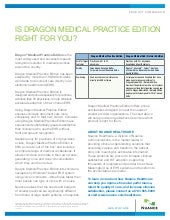

When a Bearded Dragon baby (called a hatchling) is born, it weighs about 2 grams, and measures just a few inches in length.įully-grown, an Inland Dragon male measures 20-24 inches in length, nose to tail, and weighs a pound or more. They fight off all other suitors in their territory and mate with multiple females.Ī month or so after mating, females bury up to two-dozen eggs in warm soil. They don’t congregate much except to fight, and don’t usually do very well sharing home-raising environments with other Beardies.īearded Dragon males become sexually mature within their first year and a half. They’re fast runners, which helps them dominate their territories, catch food, and escape predators. Male Bearded Dragons are aggressively territorial, and very protective of their immediate living space. They eat almost anything–insects, snails and slugs, even other lizards and dead animals, and also fruit, greens, vegetables, and flowers.īearded Dragons get water from their food, and from dew, mist, and rain.ĭragons are also good swimmers, with some coastal species more accustomed to swimming than others.

They stay underground at night, too, to sleep in the warm earth and avoid nocturnal predators.īearded Dragons are omnivorous. Dragons are good climbers, and like to climb to favored sunning spots.ĭuring the hottest part of the day, though, Bearded Dragons head for underground burrows to avoid overheating. Near cities, they seek out telephone poles or other human-made wooden structures. In the wild, you’ll see them basking in the sun on rocks or trunks and branches. Like all reptiles, Bearded Dragons are cold-blooded or ectothermic, meaning their body temperature is regulated by environmental heat and cold.įor this reason, they’re diurnal, meaning they’re mostly awake during the warmth of the day and asleep in the cooler night–just like their human caretakers. Our Pogona Vitticeps hails from the arid desert center of the Australian continent, so it thrives in extreme heat and light. Vitticeps refers to its specific species.īy 2017, there were 9.5 million reptile pets in nearly 5 million American households, and Bearded Dragons had become the fourth most sought-after reptile pet in the world!ĭifferent types of Bearded Dragons live in various climates, including sub-tropical, ocean shore, woodlands and shrublands. It belongs to the Reptilia class and the Pogona genus (common group). There are eight different species of Dragon, all of them native to Australia, but the one most of us recognize is the Central or Inland Bearded Dragon. Interestingly enough, bearded dragons have become so popular that in 2008, they helped reptiles surpass dogs and cats as the most popular pets in the UK! They were introduced to the world in the 1990’s, and rapidly dominated the reptile pet market.

They’re named after the beard-like, spiky collars around their throats, which they inflate to intimidate other Dragons, or when they’re stressed out or in love (cute, right?).īearded Dragons, often called ‘Beardies’, come from Australia originally.
Dragon medical small practice skin#
How Do I Choose the Right Bearded Dragon for Me?īearded Dragons are dinosaur-looking reptiles with spiny scales and fascinating skin colors and patterns.

Basking Accessories Like Branches, Rocks, and Hidey-Holes.What Kind of Home Does My Bearded Dragon Need?.The Cost of Caring for and Raising a Bearded Dragon.But trust me, you’re going to come out a bearded dragon expert! It’s fine, thank me later 😉
Dragon medical small practice how to#
So, if you’d like to gain a better understanding of how to care for a bearded dragon… simply keep reading! OR if you have a specific question/concern, simply use the Quick Navigation table below to be taken directly to that topic.ĭisclaimer: You may want to pour a glass of wine and grab a snack because this is definitely a longer read. Luckily, I’ve decided to put together a comprehensive Bearded Dragon Care Guide for Beginners that should take at least some of the stress out of caring for your new little guy or gal. Anyone with a bearded dragon will tell you… caring for them properly is hardly as common sense as it is with a dog or cat.įrom very specific lighting and temperature requirements, to bizarre behavior (AKA glass surfing, head bobbing, and the famous arm wave), and strict dietary needs, it’s no wonder so many first-time owners find themselves stressed out with a sick or unhappy new pet!


 0 kommentar(er)
0 kommentar(er)
